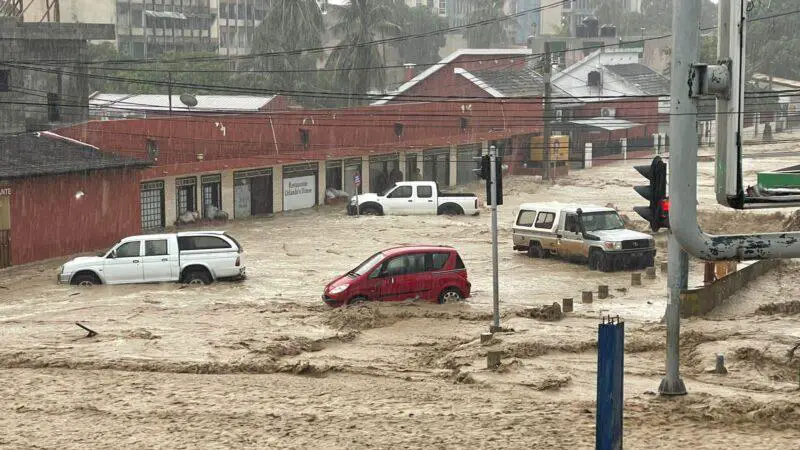- Civil unrest, electricity crisis and natural disasters in South Africa deal a body blow to the regional economy growth prospects.
- The 2023 Southern Africa Economic Outlook indicates that the Southern Africa region’s GDP growth barely reached 2.7 percent. This level is much lower than global and African averages of 3.4 percent and 3.8 percent respectively.
- According to the African Development Bank, Southern Africa region is now lagging behind its peers across the continent.
The Southern Africa zone has continued to experience a slowdown in economic growth in the past year largely driven by increasing challenges in regional powerhouse South Africa.
The south-most country on the continent has seen civil unrest, electricity crisis and natural disasters worsen the region’s economic slowdown. Neighbouring Zimbabwe, Zambia, Malawi, Madagascar, and São Tomé and Príncipe, have also experienced intense adverse weather events.
According to a report by the African Development Bank, climate change-related crisis has seen Southern Africa lag behind its peers across the continent.
Southern Africa stunted growth
The report links the slow regional performance to “lingering political and structural issues in South Africa, which drags down regional growth, and Russia’s invasion of Ukraine, which continues to put pressure on energy and food prices.“
The 2023 Southern Africa Economic Outlook indicates that the Southern Africa region’s Gross Domestic Product (GDP) growth barely reached 2.7 percent. This level is much lower than global and African averages of 3.4 percent and 3.8 percent respectively.
“Per capita income growth for most countries in the Southern Africa region is short of the growth rate needed to reverse the increase in poverty induced by the (Covid-19) pandemic and to put the region on track to meet the SDG1. High poverty and inequality rates remain endemic across the Southern Africa region,” the report noted.
Additionally, the region’s external debt which stood at 48 percent in 2022, is forecast to remain high. Overall, debt exposure is mixed within southern African countries.
However, the fiscal deficit improved slightly in 2022 at 3.5 percent of GDP in 2022, compared to 3.7 percent of GDP in 2021.
The report says falling per capita income growth for most countries in Southern Africa threatens the growth rate needed to reduce poverty. Further, the sluggish growth is weighing on youth employment, which is “one of the region’s biggest challenges.”
Low financial flows
According to AfDB, Southern Africa received the least financial flows relative to its financial needs, compared to other African regions. Most southern African countries receive financing for mitigation projects rather than investment in adaptation.
AfDB Vice President and chief economist Kevin Urama said this underlines the urgency of finding new ways to mobilize financing to address Africa’s development challenges.
“We estimate that the continent will need about $235-$250 billion annually between now and 2030 to meet investments needed under the Nationally Determined Contributions. So this leaves Africa, the African private sector and the global private sector with an investment opportunity of up to $213.4 billion annually to address climate change alone,” he said.
Urama added that financial needs for climate action in Southern Africa stood at $1 trillion. Overall, the region has an annual requirement of $90.3 billion for 2020-2030.
Currently, average annual climate finance flows to Southern Africa stand at $6.2 billion or mere 6.9 percent of what is required.
High investment opportunities
The AfDB is spearheading regional initiatives that intersect with climate adaptation, energy transition and sustainability in Africa. The lender’s Director-General for the southern Africa region Leila Mokaddem said these include financial instruments, green bonds, technical expertise, climate insurance schemes, policy interventions and much more.
“The urgency of regional climate adaptation and climate mediation action is critical for our future. The continent’s needs make it imperative for Africa to focus on identifying and assessing disaster, risk, and strengthening collaboration and coordinating appropriate responses,” she said.
Lead economist for the region Auma George Kararach noted that limited annual financing for climate change and adaptation means that several southern African countries risked failing to meet their Nationally Determined Contributions.
He noted that prioritizing development with climate portfolios, using private sector climate finance, still relatively undeveloped in the region, would be essential.
“We need to think of a wide range of financing channels and instruments to do that,” Kararach said.
Acting Director of the Country Economics Department, Ferdinand Bakoup said South Africa’s 20 percent share of Africa’s estimated more than $6 trillion natural capital reserves, offered tremendous potential for investors.
“This region can benefit from better management of its natural capital,” Bakoup said.
